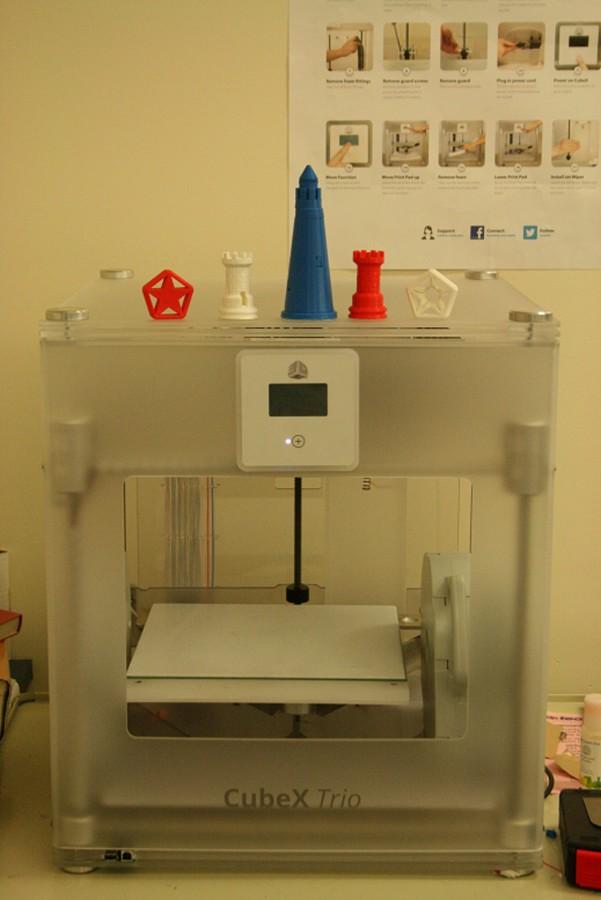Lying on the front desk of room 154 at SHS is a bright orange rook piece, from your typical game of chess. You may think that the chess piece is just a random object, but if you ask Mr. Mingles, the Science and Engineering teacher at the high school, he will tell you that it is no ordinary chess piece. Instead of being made in a factory, this chess piece started out as a flat design on the computer. With the help of the new 3D printer, this 2D design was able to make its transition into the 3D world.
During late May and early June, the high school installed a new 3d printer in room 154. When one thinks about the word 3D, they usually picture 3D glasses for a movie or 3d words on a page. Yet, this printer can do much more than make words and pictures pop out on a piece of paper. An unassuming white box with two round disks connected to a platform, this machine is capable of turning 2D designs into 3D structures. In other words, just about whatever you choose to create through Computer Aided Design (CAD), an effective manufacturing software, can be replicated as a 3D object by this printer.
“It’s a new technology, and to be able to see your own design and hold it in your hands is a very cool thing,” said junior Sam Villani. During his freshman year at the high school, Sam Villani took a Computer Aided Design class with Mr. Mingles and learned about many amazing technologies, including the capabilities of modern design systems.
Basically, the 3D printer can take a flat design on a piece of paper and turn it into a 3D structure. According to Mr. Mingles, it takes about two to three hours to print a 3D structure from the computer. Once you complete your design on the computer, the printer receives data from CAD and and slices the design into very thin layers, each layer being between four to eight one thousandths of an inch. This process is similar to how an MRI machine sends data to a computer, which receives all the signals and generates it into a 3D image. Then, the machine prints out a very thin layer of plastic to match the data on the computer, printing only the layers that are there. For example, if there’s an empty space in the design, the printer will continue to print thin layers of plastic around the space, until the computer tells it to stop.
“Your imagination is not limited. You can think of any design and see if it can be produced,” said Ms. Tucker, the high school band director. Upon realizing the printer’s capabilities, Ms. Tucker expressed her excitement at the possibility of inventing a new musical instrument for the band. Music is all about creating new things and using your imagination to bring songs to life. With the help of this new printer, it seems as though anything is possible.
“If we want to teach our kids how to solve twenty first century problems, we should really be giving them twenty first century tools,” said Mr. Mingles during his initial presentation to The SHORE Foundation, promoting the establishment of a new 3D printer. The SHORE Foundation is a parent-run organization that promotes grants from teachers and school staff for new materials or activities that would further enrich the school. After proposing his ideas, members of The SHORE Foundation funded his efforts and made it possible for the school to acquire a new 3D printer.
Not only is Mr. Mingles focused on promoting science and engineering at the high school, but he believes in exposing students to modern engineering tools. In doing so, Mr. Mingles hopes to inspire students to use their imagination to create new inventions and solve complex problems, giving them the skills they need to succeed in the outside world.
“If I could create anything, I would probably make a window opener because it’s relatively easy to design and this room needs it… It’s hot all the time,” said sophomore Jackson Schwarz with a smile. Room 154 is not the only one at SHS to become a burning crucible in the summer. If we could all make window openers, there would no more complaining for sure. Who knew a printer could solve the school’s heat problem?
